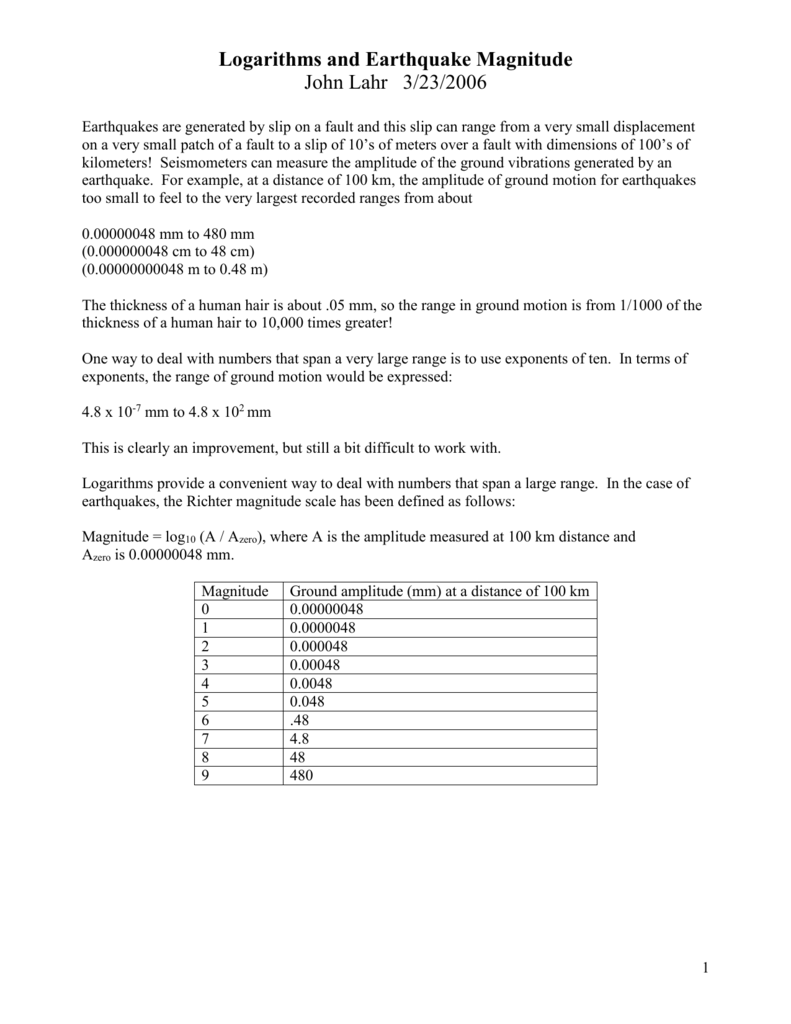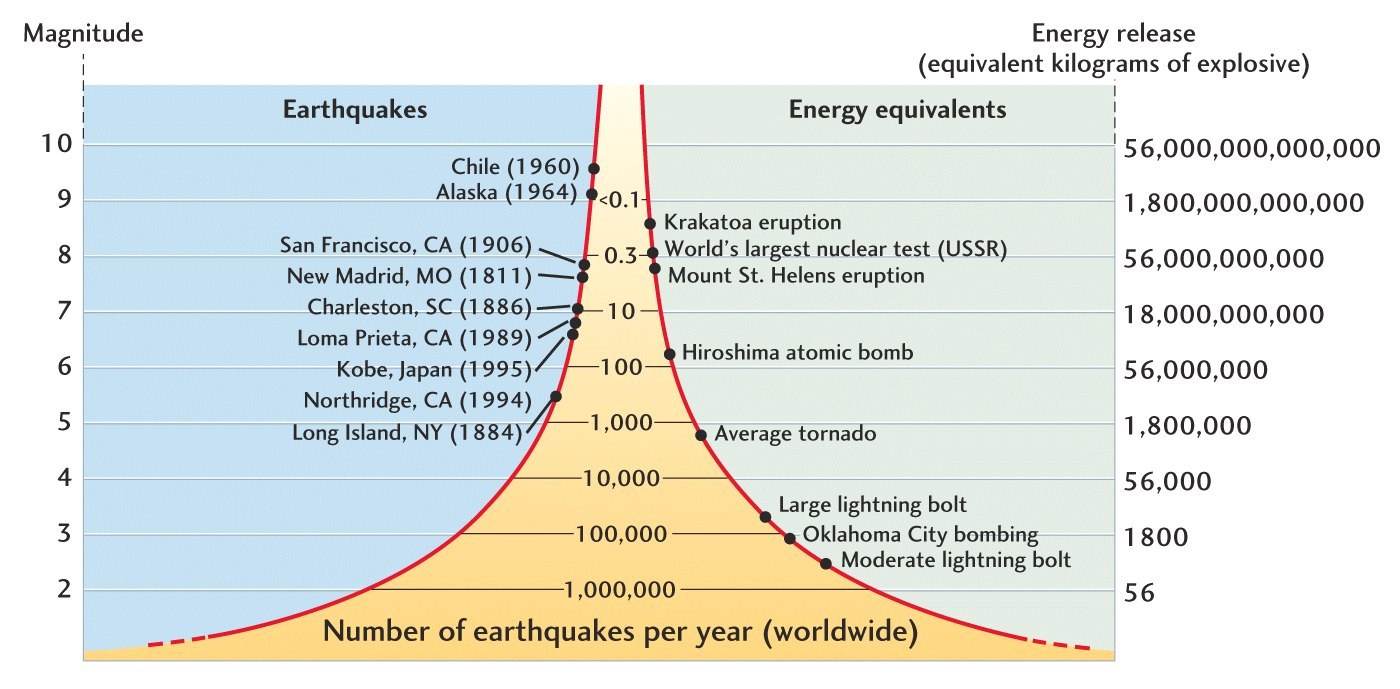Earthquake Magnitude Scale Range | These are distinguished from seismic intensity scales that categorize the intensity or severity of ground shaking (quaking) caused by an earthquake at a given location. Magnitude is based on measurement of the maximum motion recorded by a seismograph. Because the entire range of observed effects is not capable of simple quantitative definition, the strength of the shaking is commonly estimated by. Mms measures the movement of rock along the fault. Earthquakes are also classified in categories ranging from minor to great, depending on their magnitude.
Earthquakes are also classified in categories ranging from minor to great, depending on their magnitude. What's the difference between a light. The magnitude is a number that characterizes the relative size of an earthquake. Mms measures the movement of rock along the fault. The violence of seismic shaking varies considerably over a single affected area.

What's the difference between a light. Magnitude is based on measurement of the maximum motion recorded by a seismograph. The violence of seismic shaking varies considerably over a single affected area. Earthquakes are also classified in categories ranging from minor to great, depending on their magnitude. Earthquakes are also classified in categories ranging from minor to great, depending on their magnitude. The magnitude is a number that characterizes the relative size of an earthquake. Today, earthquake magnitude measurement is based on the moment magnitude scale (mms). These are distinguished from seismic intensity scales that categorize the intensity or severity of ground shaking (quaking) caused by an earthquake at a given location. The table below shows approximately how many earthquakes occur each year in each magnitude range and what the intensity might be at the epicenter for each magnitude range. Measures the total energy released by an earthquake. Seismic magnitude scales are used to describe the overall strength or size of an earthquake. Mms measures the movement of rock along the fault. Because the entire range of observed effects is not capable of simple quantitative definition, the strength of the shaking is commonly estimated by.
These are distinguished from seismic intensity scales that categorize the intensity or severity of ground shaking (quaking) caused by an earthquake at a given location. What's the difference between a light. Because the entire range of observed effects is not capable of simple quantitative definition, the strength of the shaking is commonly estimated by. The table below shows approximately how many earthquakes occur each year in each magnitude range and what the intensity might be at the epicenter for each magnitude range. The violence of seismic shaking varies considerably over a single affected area.

Earthquakes are also classified in categories ranging from minor to great, depending on their magnitude. Measures the total energy released by an earthquake. These are distinguished from seismic intensity scales that categorize the intensity or severity of ground shaking (quaking) caused by an earthquake at a given location. The violence of seismic shaking varies considerably over a single affected area. The magnitude is a number that characterizes the relative size of an earthquake. What's the difference between a light. The table below shows approximately how many earthquakes occur each year in each magnitude range and what the intensity might be at the epicenter for each magnitude range. Because the entire range of observed effects is not capable of simple quantitative definition, the strength of the shaking is commonly estimated by. Mms measures the movement of rock along the fault. Seismic magnitude scales are used to describe the overall strength or size of an earthquake. Today, earthquake magnitude measurement is based on the moment magnitude scale (mms). Earthquakes are also classified in categories ranging from minor to great, depending on their magnitude. Magnitude is based on measurement of the maximum motion recorded by a seismograph.
Seismic magnitude scales are used to describe the overall strength or size of an earthquake. Measures the total energy released by an earthquake. Mms measures the movement of rock along the fault. Earthquakes are also classified in categories ranging from minor to great, depending on their magnitude. What's the difference between a light.

Seismic magnitude scales are used to describe the overall strength or size of an earthquake. The magnitude is a number that characterizes the relative size of an earthquake. The table below shows approximately how many earthquakes occur each year in each magnitude range and what the intensity might be at the epicenter for each magnitude range. The violence of seismic shaking varies considerably over a single affected area. Measures the total energy released by an earthquake. What's the difference between a light. Earthquakes are also classified in categories ranging from minor to great, depending on their magnitude. Today, earthquake magnitude measurement is based on the moment magnitude scale (mms). Mms measures the movement of rock along the fault. Earthquakes are also classified in categories ranging from minor to great, depending on their magnitude. Magnitude is based on measurement of the maximum motion recorded by a seismograph. Because the entire range of observed effects is not capable of simple quantitative definition, the strength of the shaking is commonly estimated by. These are distinguished from seismic intensity scales that categorize the intensity or severity of ground shaking (quaking) caused by an earthquake at a given location.
Today, earthquake magnitude measurement is based on the moment magnitude scale (mms) earthquake magnitude scale. Mms measures the movement of rock along the fault.
Earthquake Magnitude Scale Range: The table below shows approximately how many earthquakes occur each year in each magnitude range and what the intensity might be at the epicenter for each magnitude range.
Source: Earthquake Magnitude Scale Range